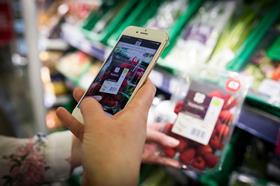
Food manufacturers should heed the incoming personalised nutrition “storm” according to Rabobank analysts.
Personalised nutrition – bespoke nutrition plans or food products based on an invididuals physical characteristics - is a burgeoning trend, catching on in retailers such as Waitrose, which offered in-store nutritionists last year.
A recent Nuffield report from new MBE recipient Barbara Bray, also highlighted the potential for personalised nutrition to galvanise public health efforts, bridging public and private sectors.
Analysts at leading food and agribusiness bank Rabobank, believe the personalised nutrition market and its technology is set to take 'substantial shares of the market by storm' in the next 10 years.
Maartje van den Berg, senior consumer foods analyst, said:“Consumers are aware – now more than ever – of the health benefits associated with good nutrition and are taking control of their own diets as a result.
“Allergies and weight loss play a role, but increasingly consumers are also looking for more holistic health benefits such as feeling fitter, sleeping better, or healthy ageing. While lifestyle changes can be a challenging way in achieving this, personalised nutrition can help in reaching these goals. Against this background, food firms will need to innovate to ensure they aren’t left behind.”
Van den Berg said more flexible production by food manufacturers could help them to cater for an increasingly targeted, personalised market in which “food hypes and trends need ever quicker responses”.
She continued: “We expect to see a profound shift in the market as food choice is outsourced to trusted technology, putting product-oriented processed-food manufacturers in a difficult position.
“Clearer labelling and marketing that highlights the presence or absence of certain ingredients, for example gluten-free or vegan, will ensure a consumer using the ‘gluten-free’ or ‘vegan’ filter on their grocer delivery gets to see the product and decreases the chance of brands losing their relevance with consumers.”



